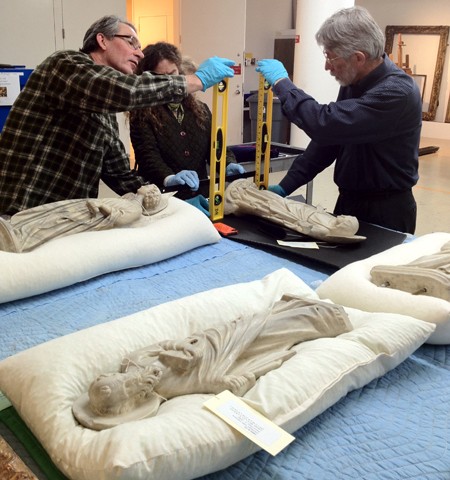Despite the impressive scholarly attention that the Venice of the high Middle Ages and the Renaissance has commanded, there is as yet no overarching study devoted to the city’s artistic output during the fourteenth century. This oversight is not for lack of surviving buildings, objects, or documentation. Petrarch (1304–1374) described Venice as “a wonder of the world,” and Giovanni di
My aim is to produce a book-length study of artistic production in Venice that merges published findings with new evidence from the archives of the numerous magistracies involved in the business of public art, starting with the Procuratia of San Marco. This state institution consisted of six procurators who held office for life and whose responsibility in artistic decision-making in this period was central. The experience of these men in secular government as ambassadors and provincial or overseas governors raised them above other elite groups, and they have with reason been compared to Renaissance cardinals. As representatives of the state and testamentary executors for nearly all citizens of Venice, they played a role in virtually every commission for churches, hospitals, confraternity halls, tombs, or altars as well as for public projects, such as San Marco and the ducal palace.
My research on the commission for the portal of San Lorenzo in Vicenza (1341–1345) (the subject of a chapter in my book The Franciscans and Art Patronage in Late Medieval Italy) illustrates the richness of a single case study and reveals at the microlevel the complex mechanisms of patronage and aesthetic choices available to the two procurators who oversaw the project. It also exposes the potential for wider analysis that my current project addresses. Further research in the archives suggests that Venice presents a rare example of a governmental, bureaucratic approach to patronage that is ripe for investigation. Numerous questions arise: How did the input of the procurators of San Marco affect the production of art? How did it measure against that of the individual patrons whose trusts the procurators administered? Did individual patrons’ wishes outweigh those of the procurators? Did the Venetian government ever impose an aesthetic?
Much of my attention this year has been devoted to studying data collected from the Archivio di Stato in Venice, particularly that pertaining to ducal tomb commissions. At CASVA, I have also been able to expand my analysis in an unexpected way, by studying at close quarters four Venetian statuettes, currently in storage, from the Samuel H. Kress Collection of the National Gallery of Art: Virgin of the Annunciation, Angel of the Annunciation, Saint Paul, and Saint Peter (1960.5.10–13). Alison Luchs, curator of early European sculpture, and Shelley Sturman, head of object conservation, carried out detailed measurements on my behalf and shared technical analyses that enabled me to make a partial reconstruction. I suggest that the four figures may well have come from the same wall-mounted tomb monument, perhaps one resembling the tombs of Ubertino da Carrara (d. 1345) and Jacopo da Carrara (d. 1351) in Padua, each featuring a sarcophagus and an overhead canopy with pilasters. New photography of the Kress sculptures has been commissioned, and investigation will continue with a view to publishing an article jointly with the conservation team.
I have also carried out
